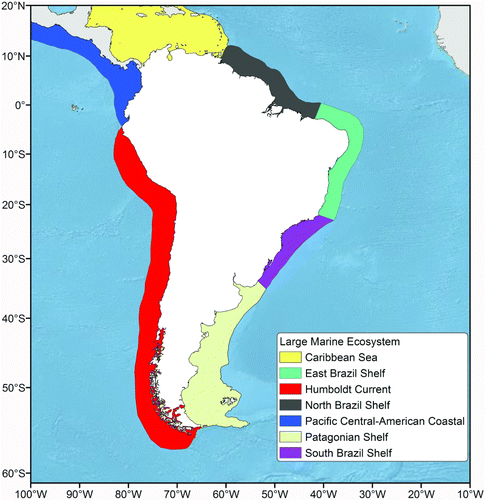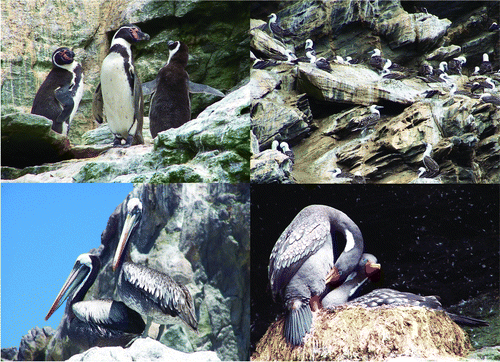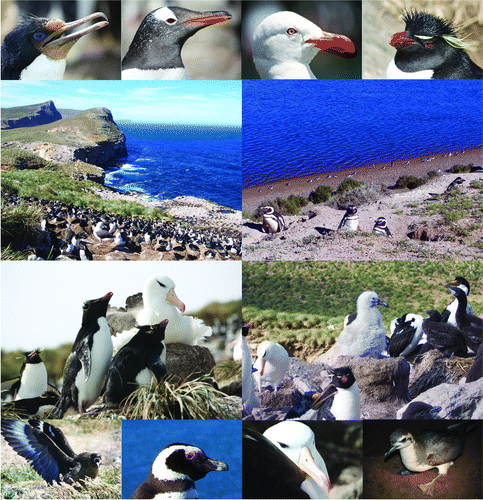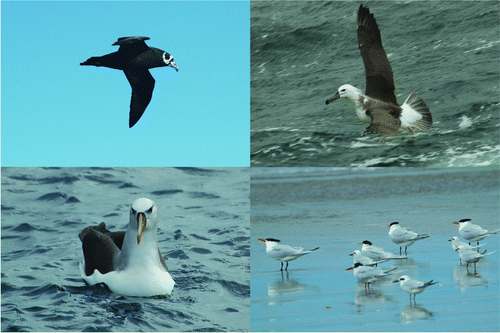Figures & data
Figure 1. Large Marine Ecosystems bordering South America, as defined by Sherman & Hempel (Citation2009) (see also http://www.lme.noaa.gov/).

Figure 2. Humboldt Current LME seabirds: Humboldt penguins (upper left), Peruvian boobies (upper right), Chilean pelicans (lower left) and red-legged cormorants (lower right). Choros and Chungungo Islands, Northern Chile. Photographer: Petra Quillfeldt.

Figure 3. Patagonian Shelf LME seabirds. Upper row left to right: imperial shag, gentoo penguin, dolphin gull, southern rockhopper penguin. Second row: breeding sites on cliffs (left, New Island) and beaches (right, Península Valdéz). Third row: mixed breeding colonies (here, southern rockhopper penguins, black-browed albatrosses and imperial shags). Lower row left to right: Falkland skua, Magellanic penguin, black-browed albatross, thin-billed prion. Falkland Islands/Islas Malvinas and Península Valdéz. Photographer: Petra Quillfeldt.

Table I. Overview of the oceanographic characteristics of the LMEs treated in detail in this review.
Figure 4. South Brazil Shelf LME seabirds: spectacled petrel (upper left), juvenile black-browed albatross (upper right), Atlantic yellow-nosed albatross (lower left) and a mixed group of royal terns, Cabbot's tern, and snowy-crowned tern in breeding plumage, with non-breeding South American terns (lower right). Photographer: Leandro Bugoni.
